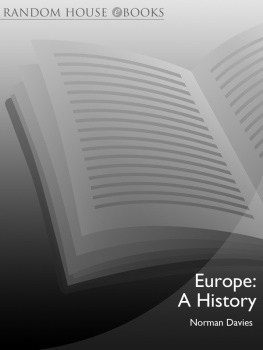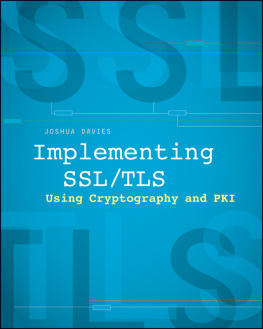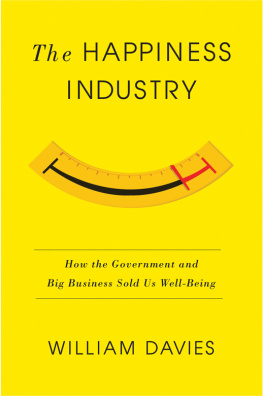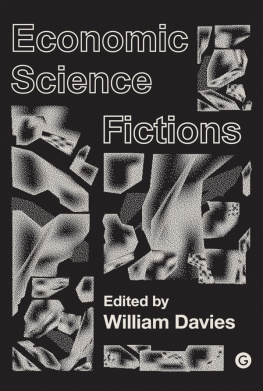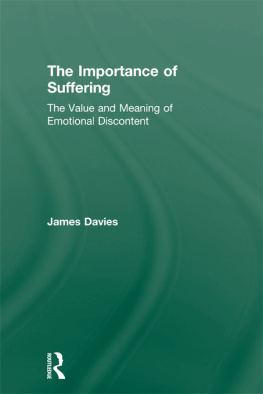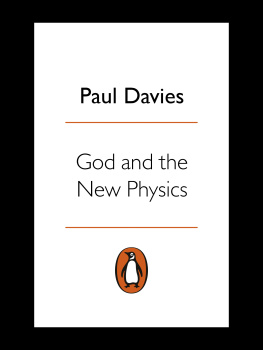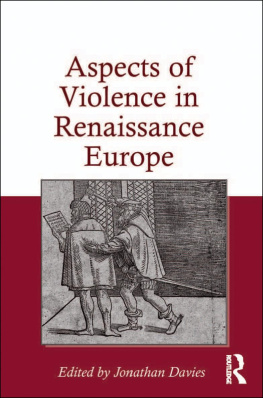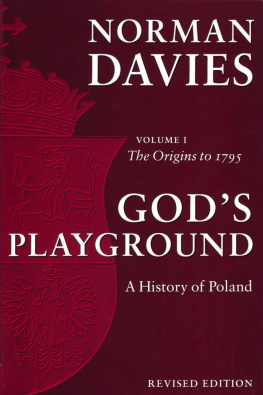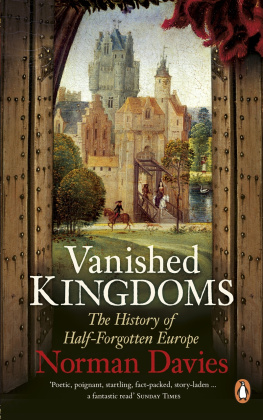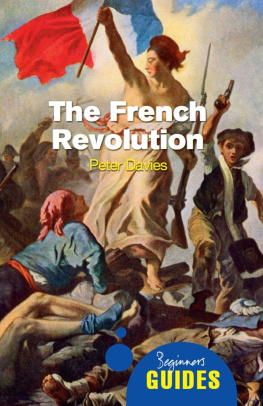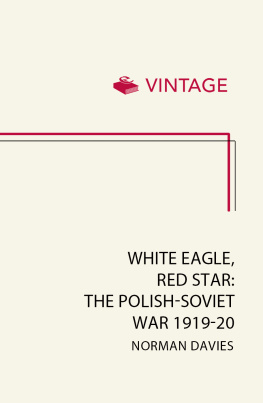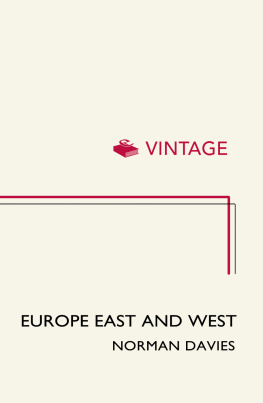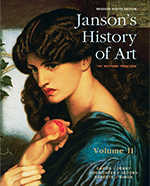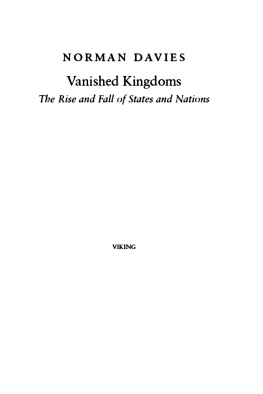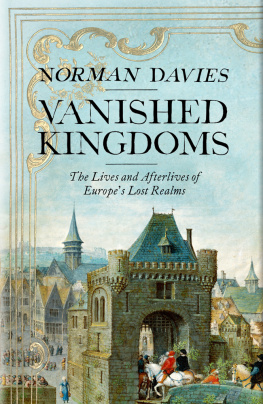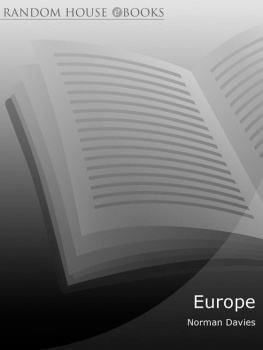Davies - Europe: a history
Here you can read online Davies - Europe: a history full text of the book (entire story) in english for free. Download pdf and epub, get meaning, cover and reviews about this ebook. City: Europe, year: 2014, publisher: Pimlico;The Bodley Head, genre: Art. Description of the work, (preface) as well as reviews are available. Best literature library LitArk.com created for fans of good reading and offers a wide selection of genres:
Romance novel
Science fiction
Adventure
Detective
Science
History
Home and family
Prose
Art
Politics
Computer
Non-fiction
Religion
Business
Children
Humor
Choose a favorite category and find really read worthwhile books. Enjoy immersion in the world of imagination, feel the emotions of the characters or learn something new for yourself, make an fascinating discovery.
Europe: a history: summary, description and annotation
We offer to read an annotation, description, summary or preface (depends on what the author of the book "Europe: a history" wrote himself). If you haven't found the necessary information about the book — write in the comments, we will try to find it.
Europe: a history — read online for free the complete book (whole text) full work
Below is the text of the book, divided by pages. System saving the place of the last page read, allows you to conveniently read the book "Europe: a history" online for free, without having to search again every time where you left off. Put a bookmark, and you can go to the page where you finished reading at any time.
Font size:
Interval:
Bookmark:
CONTENTS
About the Author
Norman Davies C. M. G., F. B. A. is Professor Emeritus of the University of London, a Supernumerary Fellow of Wolfson College, Oxford, and the author of several books on Polish and European history, including Gods Playground, White Eagle, Red Star, The Isles, Microcosm and Europe: East and West.
About the Book
From the Ice Age to the Cold War, from Reykjavik to the Volga, from Minos to Margaret Thatcher, Norman Davies here tells the entire story of Europe in a single volume. Chosen ten times as Book of the Year, it is the most ambitious history of the continent ever undertaken.
LIST OF MAPS
The Peninsula, c.10,000 BC
Queen Europe
EastWest Fault Lines in Europe
Europe: Physical Regions
The Ancient Aegean: 2nd Millennium BC
Prehistoric Europe
RomeSicilyCarthage, 212 BC
The Roman Empire, 1st Century AD
Constantinople
Europe: Migrations
Pope Stephens Journey, AD 753
Europe, c. AD 900
The Low Countries, 1265
Europe c.1300
The Growth of Muscovy
Europe, 1519
Rome, Ancient and Modern
Europe, 1713
Mozarts Journey to Prague, 1787
Europe, 1810
Revolutionary Paris: (a) The City; (b) The Campaign of 1814
Europe, 1815
Europe, 1914
Europe during the Great War, 19141918
The New Europe, 19171922
Europe during the Second World War, 19391945
Post-War Germany, after 1945
Europe Divided, 19491989
Europe, 1992


Map 1.
The Peninsula, c.10,000 BC
For Christian Our Californian

PREFACE
T HIS book contains little that is original. Since most aspects of the subject have been thoroughly worked over by previous historians, primary research was rarely required. The books originality, such as it is, lies only in the selection, rearrangement, and presentation of the contents. The main aim was to map out a grid of time and space for European history and, by introducing a sufficiently comprehensive range of topics into the framework, to convey an impression of the unattainable whole.
The academic apparatus has been kept to a minimum. There are no notes relating to facts and statements that can be found in any of the established works of reference. Among the latter, special mention must be made of my twenty-nine volumes of The Encyclopaedia Britannica (11th edn., 191011), which far surpasses all its successors. Endnotes are only provided to substantiate less familiar quotations and sources of information beyond the range of the standard textbooks. One should not assume that the text necessarily agrees with interpretations found in the works cited: On ne stonnera pas que la doctrine expose dans le texte ne soit toujours daccord avec les travaux auxquels il est renvoy en note.
The academic considerations which underlay the writing of the present volume have been set out in the Introduction. But its design may need some explanation.
The text has been constructed on several different levels. Twelve narrative chapters pan across the whole of Europes past, from prehistory to the present. They gradually zoom in from the distant focus of , which cover the twentieth century at roughly one page per year. Each chapter carries a selection of more specific capsules, picked out, as it were, by telephoto, and illustrating narrower themes that cut across the chronological flow. Each chapter ends with a wide-angle snapshot of the whole Continent as seen from one particular vantage-point. The overall effect may be likened to a historical picture album, in which panoramic tableaux are interspersed by a collection of detailed insets and close-ups. One hopes it is understood that the degree of precision attainable at these different levels will vary considerably. Indeed, a work of synthesis cannot expect to match the standards of scientific monographs that have rather different purposes in mind.
The twelve main chapters follow the conventional framework of European history. They provide the basic chronological and geographical grid into which all the other topics and subjects have been fitted. They concentrate on event-based history: on the principal political divisions, cultural movements, and socio-economic trends which enable historians to break the mass of information into manageable (though necessarily artificial) units. The chronological emphasis lies on the medieval and modern periods, where a recognizably European community can be seen to be operating. The geographical spread aims to give equitable coverage to all parts of the European Peninsula from the Atlantic to the Uralsnorth, east, west, south, and centre.
At every stage, an attempt has been made to counteract the bias of Eurocentrism and Western civilization (). But in a work of this scope it has not been possible to extend the narrative beyond Europes own frontiers. Suitable signals have been made to indicate the great importance of contingent subjects such as Islam, colonialism, or Europe overseas. East European affairs are given their proper prominence. Wherever appropriate, they are integrated into the major themes which affect the whole of the Continent. An eastern element is included in the exposition of topics such as the Barbarian invasions, the Renaissance, or the French Revolution, which all too often have been presented as relevant only to the West. The space given to the Slavs can be attributed to the fact that they form the largest of Europes ethnic families. National histories are regularly summarized; but attention has been paid to the stateless nations, not just to the nation-states. Minority communities, from heretics and lepers to Jews, Romanies, and Muslims, have not been forgotten.
In the last chapters, the priorities of the Allied scheme of history have not been followed (), and whose demise offers a suitable hiatus in a continuing story. The approach of the twenty-first century sees the opening of a new opportunity to design a new Europe.
The capsules, of which there are some 300 (see Map 30 and ), perform several purposes. They draw attention to a wide variety of specifics which would otherwise find no place among the generalizations and simplifications of synthetic history-writing. They sometimes introduce topics which cross the boundaries of the main chapters; and they illustrate all the curiosities, whimsies, and inconsequential sidestreams which over-serious historians can often overlook. Above all, they have been selected to give as many glimpses as possible of the new methods, the new disciplines, and the new fields of recent research. They provide samples from some sixty categories of knowledge, which have been distributed over the chapters in the widest possible scatter of period, location, and subject-matter. For arbitrary reasons of the books length, the publishers patience, and the authors stamina, the original capsule list had to be reduced. None the less, it is hoped that the overall pointilliste technique will still create an effective impression, even with a smaller number of points.
Each capsule is anchored into the text at a specific point in time and space, and is marked by a headword that summarizes its contents. Each can be tasted as a separate, self-contained morsel; or it can be read in conjunction with the narrative into which it is inserted.
Font size:
Interval:
Bookmark:
Similar books «Europe: a history»
Look at similar books to Europe: a history. We have selected literature similar in name and meaning in the hope of providing readers with more options to find new, interesting, not yet read works.
Discussion, reviews of the book Europe: a history and just readers' own opinions. Leave your comments, write what you think about the work, its meaning or the main characters. Specify what exactly you liked and what you didn't like, and why you think so.

